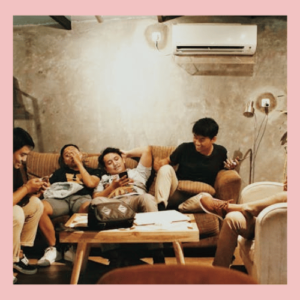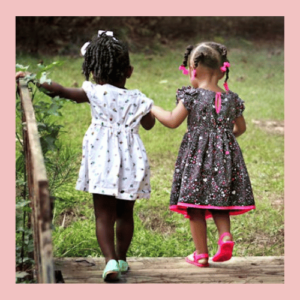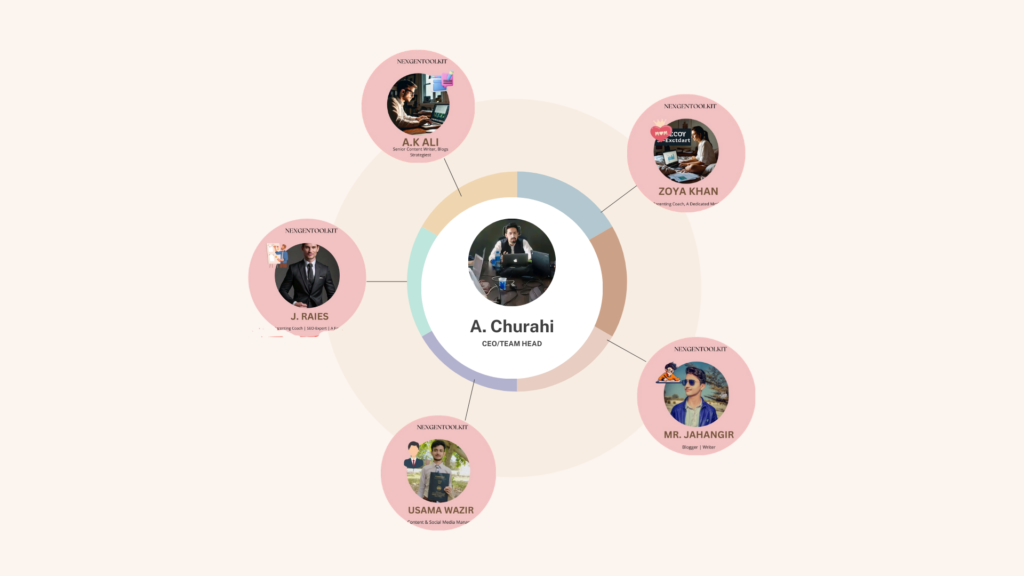This is a wonderful way for children especially the young ones to be introduced to art and the artists in society. Thus, with the help of biographies of famous artists and their creations, children can get inspiration, discover new methods of painting, and enhance their understanding of art. Before listing the simple procedure to follow in the identification of 20 famous artists for your children, here is a step-by-step guide to what you have to do to make learning fun for your kids.
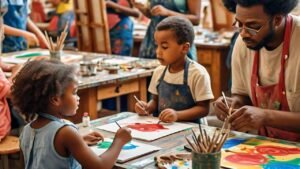
Step 1: Setting up the Stakes for Art Appreciation
Start by defining art appreciation to him. Then proceed to explain that art can be presented in forms such as painting, sculpture, and drawings among others. Stress that every artist is different and the artist that you chose has his/her vision on the piece.
Step 2: Picking the Artists
Choose artists from different periods, different styles and of diverse cultures. This addition guarantees balanced approaches in the exploration of art history. It may be advisable to add artists associated with different art periods like; The Renaissance artists, Impressionists artists, Cubism artists and contemporary artists.
Step 3: Gathering Resources
Collect such books, web-sites, videos as far as possible following the age and appropriateness of these artists. It will help find materials consisting of photos of their artworks and the description of the artifacts is quite simple and easy to comprehend for children.
Step 4: Introducing Each Artist is a PDF document that lists each artist’s name and a brief description of his or her artwork.
It is better to present one artist at a time. The basic information includes a brief biography of the artist and major facts of his life, achievements in the art world, birthplace, important events in his life and creations.
Step 5: Exploring Artworks
Engage the responses related to the artworks created by the artist. Encourage your child to look at things like the color, texture or the theme of the picture. Ask them what emotions are portrayed in stories , certain artworks and if possible let them share their views on the same.
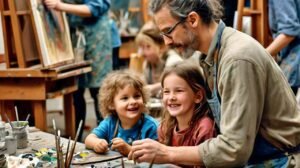
Step 6: Learning Techniques
Explain the aspects of the techniques employed by the two artists. For instance, demonstrate how Leonardo da Vinci incorporated the methods of shading in his drawings and how Vincent van Gogh incorporated heavy strokes in his paintings. Pet your child to try these techniques in his or her own artwork.
Step 7: Fun Activities
Do some interesting things connected with each artist. For instance, make a cut and paste work drawing from the cubist style of Pablo Picasso or paint a picture of a scenery in the impressionism style and technique of Claude Monet. These activities let children understand the approach of the artist and awaken their own imagination.
Step 8: Discussing Impact
For each artist, describe how their work contributed to the history of art and/or the culture. Discuss how their ideas and innovations impacted the other artists/creatives and the world in general. Discuss with your child the possibilities of the eternity of an artist.
Step 9: In this connection, field trips and exhibitions are also an extension for the learning process for students.
- If you can, go see works in galleries and museums that are included in exhibitions of the artists you have learnt. Another reason is that the child gains a better understanding of the artwork when he or she gets a chance to have a feel of the original piece.
Step 10:it is crucial to think about the implications of lesson planning and situated learning in order to be able to reflect and create, which means to be ready to take creative action.
- Remind your child to think and express their ideas about the information they gained as an outcome of the lessons, regarding each artist. I gathered them and asked them to produce their own artwork using their favorite artist incorporating some of the skills they learnt from the different artists.
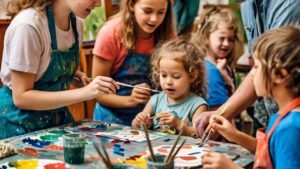
Step 11: Art to History
Explain the historical background of the period which each artist belonged to and operated from. They should be able to identify how historical events, cultural movements or societal changes affected their art and this assists children to appreciate the fact that art is thus inspired by the period it finds itself.
Step 12: In the same or separate room, we will set up Interactive Games and Quizzes.
Try to make your child solve interactive games or quizzes on the specific artists that you have introduced to him/ her. Make up questions that are in the field of trivia related to their lives, artworks and techniques. This consolidates what they have learnt in a more exciting manner.
Step 13: The web is filled with virtual museum tours as most institutions have taken advantage of technologies such as social media to host their museums online.
- Search virtual museum tours available for viewing and relate them to work of art and artists seen in class. A large number of museums provide clients with an opportunity to have virtual tours with images of the exhibits and their description in high resolution.
Step 14: Artist Comparisons
Teach your child to do a comparison of artwork that has been done by different artists. Explain the process of comparison and contrasting of the styles, themes and techniques. It also assists them to enhance their analytical skills and improve knowledge of the amount of diversity there is in art.
Step 15: Artistic Interpretations
Encourage your child to make their own version of a well-known painting. Suggest them to draw the interpretation of a painting or sculpture or scan and do the similar work of the painter of the current generation.
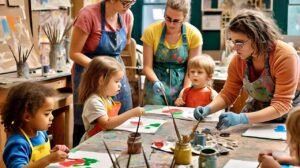
Step 16: Narrative by Means of Art
Promote art as a way of telling a story or history through an artwork puzzle by asking your child to come up with a story from a preferred artwork or artist. The purpose of this activity is to encourage creativity and enable students to discuss or interpret the narrative literacy of art.
Step 17: Weekly crits
Arrange casual art critique meetings in which common topics include your child’s artwork or most admired artworks of various artists. Make them able to communicate their ideas, perceptions and emotions concerning art and make them confident in their ideas.
Step 18: How to Create an Art Portfolio
Facilitate your child organize a collection of artworks and art projects imitating the works of famous artists. It helps them to have pride in what they are doing; this portfolio is their summary of their artistic work and development.
Step 19: Community Art Projects are Explorations
Create pieces of art in cooperation with other students that reflect the works of certain artists. This could involve painting murals that would go up on walls, being involved in exhibitions that are common in the local communities, or being involved in ever-enlivening those structures we fondly call artworks. Through art, it builds the community and several positive values such as pride in the city, region, or town.
Step 20: Celebrating Creativity
Support your child’s imagination and the artistic processes they go through throughout the different famous artists they come across. Frame some of the art pieces and showcase them at home, invite the kids’ friends over to showcase the artwork or try to participate in other art competitions or events that are local to them.
Conclusion
These are other measures that can be taken to supplement the existing images in reaffirming your child’s education and continued creativity about famous artists as well as critical thinking skills and art appreciation: It is crucial to adjust the activities that are carried out in line with the preferences of the child to maximize on art education that your child gets while he or she is exploring the various artists. Happy learning and creating!
Explore This Nicknames for Charles








